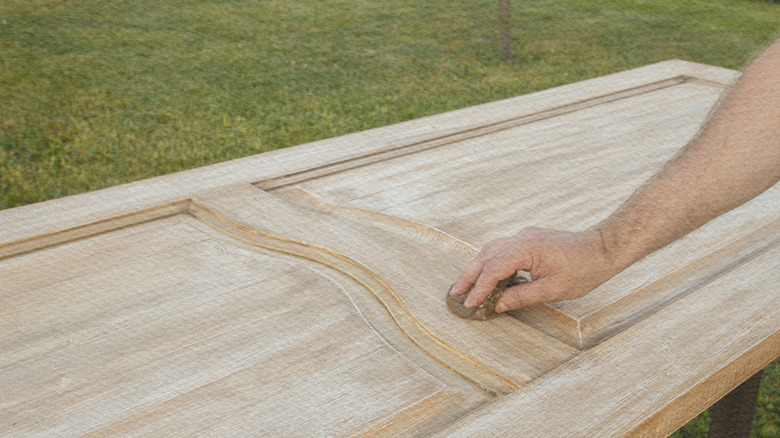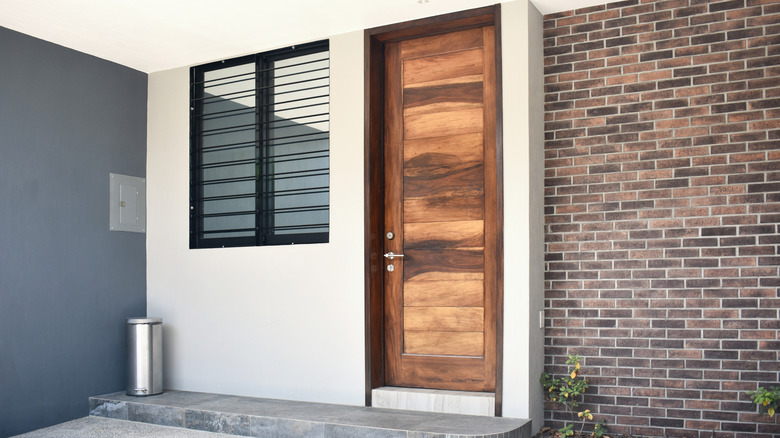Achieve An Elegant Wood Grain Look On A Budget With This Front Door DIY
Exterior doors can often be a mixed bag in both new and older homes. Many older homes have doors that look a little worse for wear after many years of use, but even newer homes may be cursed with generic metal or fiberglass builder-grade doors that lack personality. While stunning wood doors are always beautiful, they can be a mistake people make when choosing a front door under some climate conditions, and they can cost much more than other door varieties. There is, however, an easy solution shared in a YouTube video by Dan Simrell, who transforms a ho-hum door with a faux wood finish that looks just like the real thing. The whole project just involves some wood stain, a polyurethane clear coat, and a wood graining tool, like the LUTQ Natural Woodgrain Maker.
If you can't find the perfect front door, you can create one! This is a great budget-friendly alternative to replacing your door entirely if you want the warm, textured look of real wood. The look can be created with any colored stain to fit your home style and amp up your curb appeal. For more traditional homes or spaces, opt for a richer, deeper wood or use a lighter, blonder wood stain for a more contemporary or Scandinavian look.
Giving your door a faux wood makeover
Prepare your door for staining by sanding and cleaning it thoroughly with mineral spirits. Adding a coat of white or beige primer can also give the door a fresh face and prepare it for the stain. In his YouTube tutorial, Dan Simrell uses Zar oil-based wood stain, which goes on smooth, dries quickly, and works well on multiple surfaces. Start with any inset panels on the door. Applying the stain with a rag, work from the center of each panel outward and avoid too much build-up and pooling. Radiate the stain outward, using a dry brush technique to get some texture in the tight spots and corners.
Drag or roll the wood grain tool down the panel several times, creating the distinctive wood grain effect. If you mess up or make a mistake, reapply the stain and start again. Continue to cover the whole door, working outward and creating continuous woodgrain lines down the surface of the sides. Allow this pattern to dry completely before applying a thin, smooth coat of stain over the top. This coat should be transparent enough to see the wood grain pattern through it. Allow the door to dry for 24 hours and then add a final protective layer of polyurethane to the entire door.
Other options for a faux wood look on doors
For additional richness, try combining two or more different stain varieties to get a more dimensional look as you pull the wood grain tool between two shades. It's also possible to create this look using paint instead of stain on many surfaces. For a cottage style or farmhouse look, use a darker colored paint underneath like black, brown, or charcoal gray. Add a layer of white or cream paint, then use the wood grain tool to make the darker shade visible through the white grain. For even more texture and interest, experiment with a bright or bold grain color over a black or dark gray door.
This is actually a great treatment for a number of faux wood projects. The wood grain tool can be used to add an interesting natural texture to things like plywood paneling, laminate countertops, dressers, and more. It will also work on interior doors and even those that are already made of wood but lack the character and detail of a good grain.


